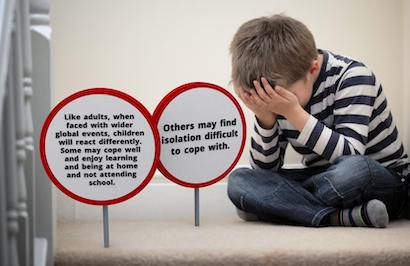Reversing the pandemic's damage to children’s mental health- the challenge for schools

Over a year ago I wrote an article during children's mental health week, discussing the much needed overhaul of the Mental Health Act and HM Government's strategic plan to improve prevention activity and the promotion of good mental wellbeing and resilience amongst pupils and staff. Understandably, the implementation and progress of the plan, including the appointment of Designated Mental Health Leads (DMHLs) in all schools by 2025, has undoubtedly been affected, as educational settings have striven stalwortly to maintain provision throughout the impact of the Covid-19 pandemic.
Pre‐ pandemic context
Pre-pandemic, statistics recorded mental health disorders as the leading cause of child disability in the UK. To put this in context, one in nine children met the criteria for a mental health disorder in England1. Disorders such as:
- emotional disorders;
- behavioural disorders;
- neurodevelopmental disorders;
- psychotic disorders.
How the pandemic has affected children's mental health
Pre-pandemic, the high level of unmet child mental health need was widely described as ‘a crisis' and, whilst understandably there has been limited robust research published to date about the impact of the Covid-19 pandemic on the mental health of children2 (particularly those under 5 year-old3 ), the limited data does suggest an overall worsening for children with known vulnerability factors. Whilst most children appear to have remained well, the mental health and wellbeing of children with previous mental health or learning difficulties and those socioeconomically disadvantaged has worsened.
Referrals to child mental health services have reached record highs as the pandemic has progressed. Latest NHS England data4 demonstrates the highest ever recorded monthly referrals and compared to the previous year, April 2020 to March 2021 statistics record there was a 37% increase in child mental health referrals and a 59% increase in referrals for child eating disorders5.
It is important to recognise that the majority of the data gathered has been from questionnaires, interviews or examination of health records which, although not robust research data, does present a worrying picture. Despite a Cross-Government response committing £79M to accelerate the plan, improve provision and introduce initiatives, many stakeholders feel this is insufficient to meet the needs of children with, or at risk of, developing poor mental health.
10 mains Factors found to have negatively affected Children's mental health and wellbeing
What is clear from current data is that the children's responses clearly describe factors directly attributed to the impact of the pandemic as having a negative effect on their mental health and wellbeing. Such factors include:
- loneliness;
- worrying about themselves or others getting Covid-19;
- demotivation;
- loss of sense of purpose;
- reduced contact with friends / family;
- lack of daily structure;
- inability to access enhanced provision, clubs and activities;
- stress about completing schoolwork, including less access to educational support;
- disrupted exams;
- uncertainty about their future, including future employment.

Reversing pandemic's damage to children's mental health in schools
As we move into the endemic phase of Covid-19 many of these factors will stabilise over time however, it would be wrong to expect that by merely resuming uninterrupted service provision, children's mental health and wellbeing will improve.
Whilst initiatives such as the Wellbeing for Education Return are beneficial, safeguarding the mental health and wellbeing of children and young people needs to be at the heart of child protecton, and firmly embedded across all aspects of central education policy.
Now more than ever we need to support all educational settings to ensure that:
- supporting mental health and wellbeing is embedded across all policies;
- designated leads are appointed and trained to lead on strategy and implementation;
- all staff receive mental health and wellbeing support training as part as their core safeguarding training , to include prevention measures and recognising early signs of difficulties;
- access pathways to referral and specialist support are known by staff and not impeded;
- mental health and wellbeing is a key focus in general contact with and support given to parents / carers, including access to resources.
If we are talking about reversing the pandemic's damage to education, we must invest in and equip staff in nurseries, schools and colleges with the knowledge and skills to support the mental health and wellbeing of children and young people as a priority.
- - Vizard, T. et al. (2020). Mental health of children and young people in England, 2020: Wave 1 follow up to the 2017 survey. NHS Digital. ↵
- - Under 18-year-olds ↵
- - POSTNOTE 653 September 2021 Children's mental health and the COVID-19 pandemic ↵
- As at May 2021. ↵
- - NHS Digital (2021). Mental health services monthly statistics. ↵
SSS Learning Safeguarding Director
11 February 2022